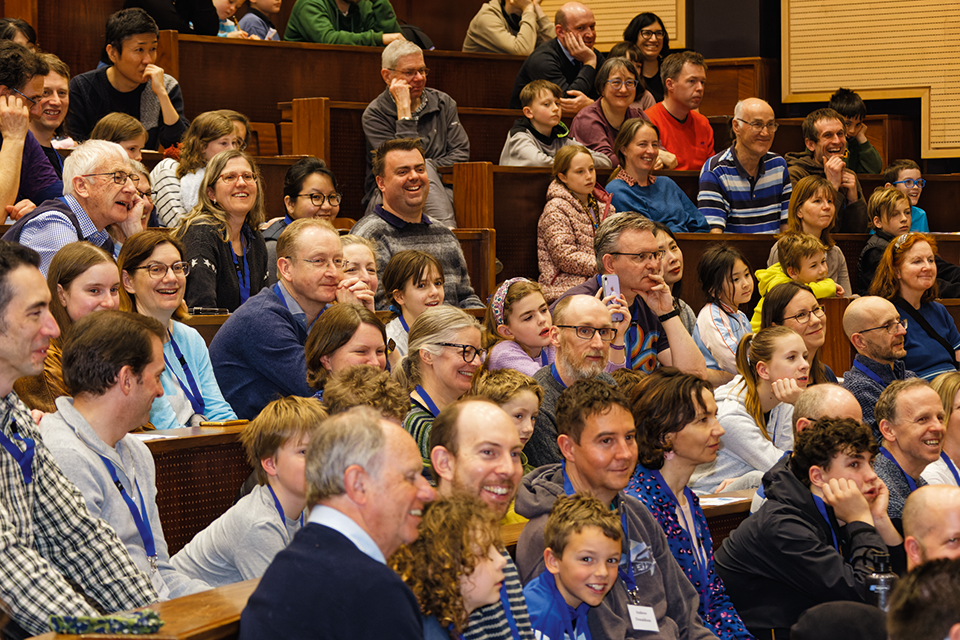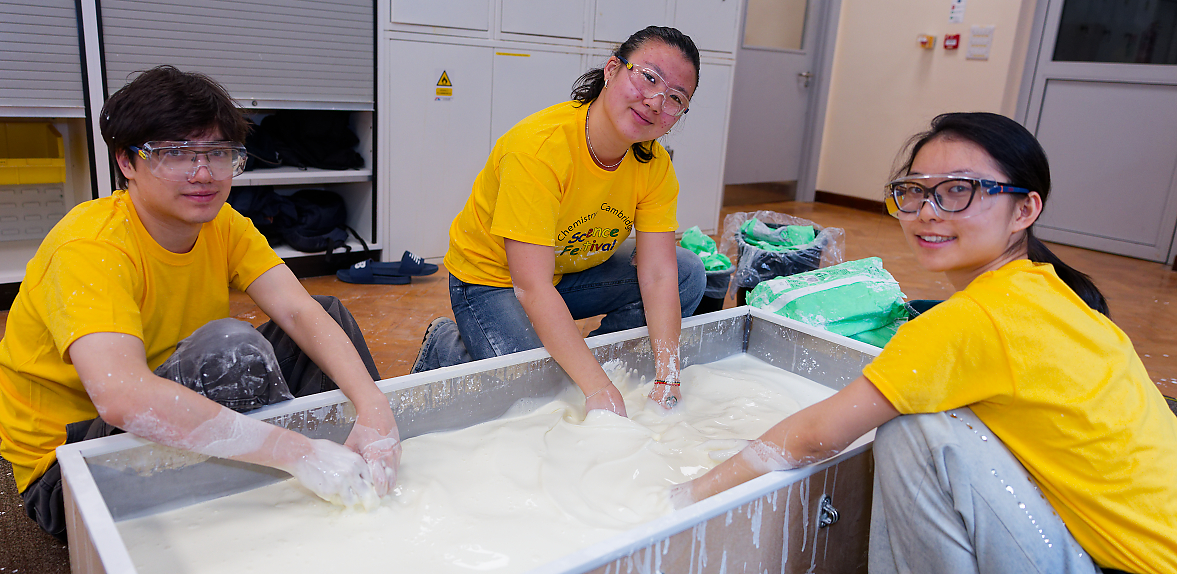
Science Open Day, Free Range Chemistry taken by Nathan Pitt ©University of Cambridge
We threw our doors open for the Cambridge Festival with an Open Day that was bigger, better and more squelchy than ever with activities throughout all the teaching laboratories and amazing lectures from our scientists.
No added chemicals

Prof. Peter Wothers put a new spin on his chemistry demonstration lecture with ‘Free Range Chemistry – No Added Chemicals’. Peter wowed audiences with incredible reactions which included creating colourful vapours from seaweed and exploding nitro-glycerine prepared from natural ingredients. This was all accompanied with Peter providing an accessible explanation into the chemistry behind these incredible reactions. This is the second packed-out Open Day demonstration lecture since Covid.
Alumni lunch

Over 100 alumni had reserved seating for Peter’s first lecture and afterwards enjoyed a buffet lunch in the Department. The details of next year’s alumni lunch will appear in the winter edition of Chem@Cam with instructions on how to book for the next event.
Solar chemical technology

Prof. Erwin Reisner’s lecture, entitled ‘Solar Chemical Technologies’, focused on an emerging technology that uses sunlight and waste as a precious resource in a circular economy. He discussed how his work is recontextualising waste products, such as greenhouse gases, carbon dioxide, non-edible biomass and plastic waste, as valuable resources. Using these ingredients his Lab produces sustainable fuels and chemicals for energy storage, transportation and the chemical industry.
The concept, design and prototypes of devices performing solar chemistry for a net-zero 2050 economy were presented, along with a device display of his solar cell which is discussed on page 26.
There was also a PET recycling bin available where visitors could deposit their used water bottles for conversion into hydrogen. Prof. Reisner hopes to have more of these throughout the Department in the future.
CHaOS!

Alongside our amazing speakers and Department-run events, we hosted CHaOS (Cambridge Hands-On Science), Cambridge’s biggest student-led science outreach group. They filled the IA Teaching Laboratory and the car park with over 30 hands-on activities for their annual event ‘Crash, Bang, Squelch’ and ran over 30 hands-on science experiments with student volunteers. Visitors could find out the answers to questions like: why hot air balloons float and how your lungs work.
CHaOS also presented a series of talks about weird and wonderful science and ran a robotics workshop where visitors had the opportunity to design and programme small moving robots. We look forward to welcoming CHaOS back to the Department in 2026!
This article was originally published in Chem@Cam magazine Issue 70.
